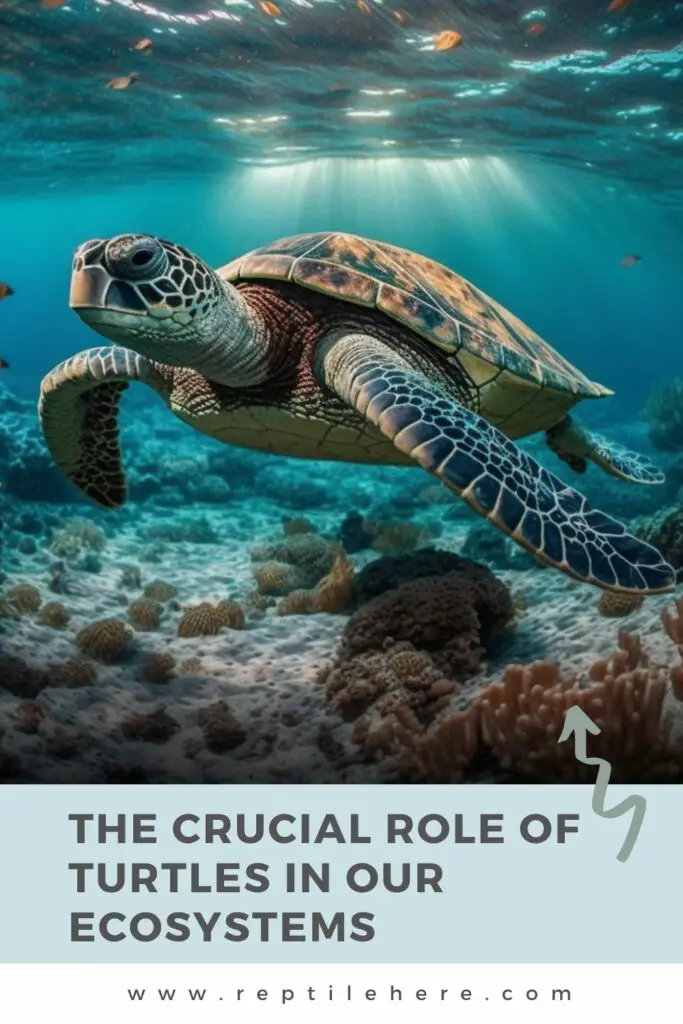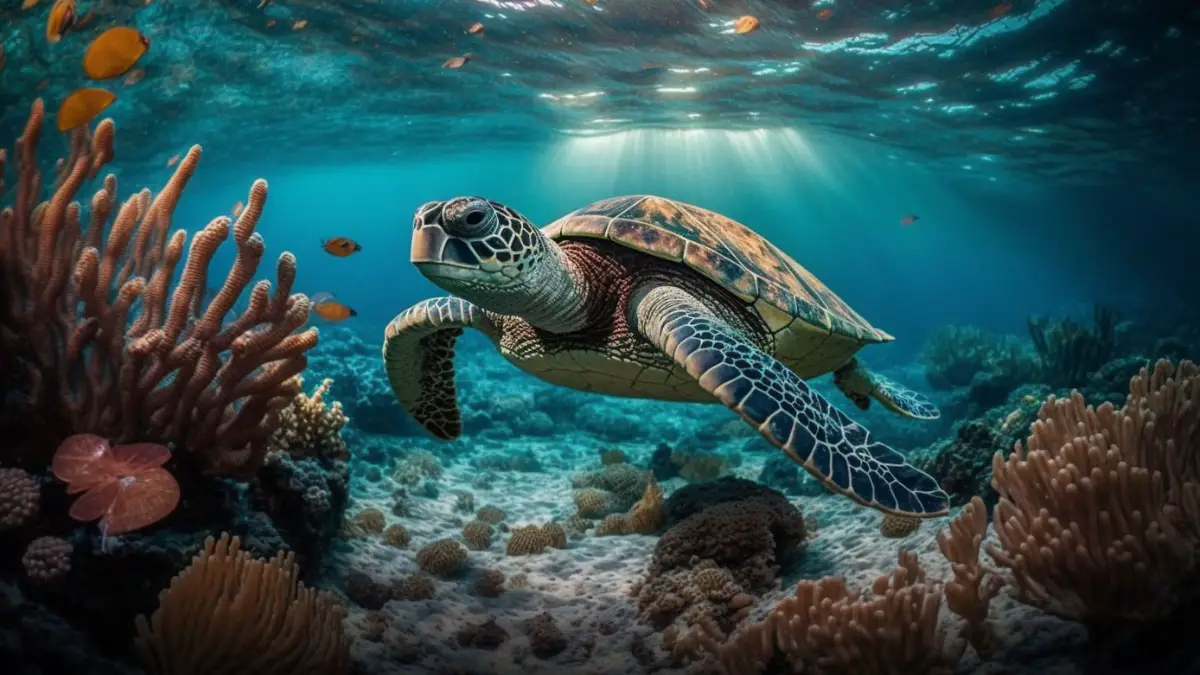The Crucial Role of Turtles in Our Ecosystems
Turtles have been roaming planet Earth for over 200 million years. And if you think they survived this long just to be another useless species on the planet, you’re mistaken. Turtles play a crucial role in ensuring a healthy and balanced ecosystem.
The crucial role of turtles in our ecosystem includes helping control algae and other aquatic plant growth, promoting seed dispersal, nutrient recycling, building habitats for other animals, and helping restore collapsed ecosystems.
In this article, we’ll comprehensively discuss what role turtles play in a healthy ecosystem. You’ll also discover what would happen if turtles go extinct and why losing these animals can be disastrous for our planet.
The crucial role of turtles in our ecosystems
Contents
As we’ve just said, turtles play a crucial role in promoting a healthy and balanced ecosystem. Interestingly, their play their role on mother Earth by being either predators or prey.
For the predator part, they can play various roles including being herbivores, carnivores, or omnivores. Or they can be specialists that prefer eating a few food items or generalists that eat pretty much anything.
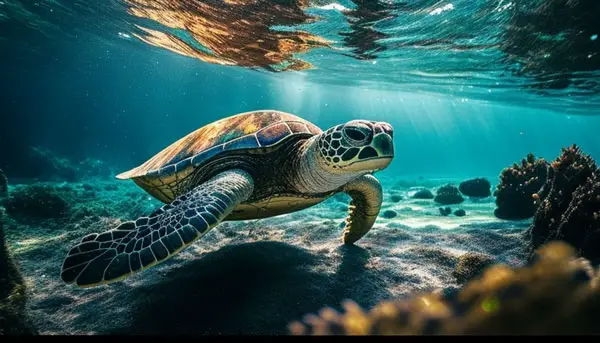
The critical role these turtles play in our ecosystem includes:
Turtles are a crucial link in the food chain
One of the ways turtles contribute to our ecosystem is by being a food source for many predators, ensuring energy flow of any given environment. They’re prey to a wide variety of animals including sharks, snakes, killer whales, lizards, coyotes, crabs, carnivorous fish, etc.
Not just the turtles, their eggs also make food for many animals, further helping with energy flow in their respective environments.
Sea turtles, for instance, lay their eggs on the beaches, but only 27% of them make it back to the ocean as hatchlings. The rest become food for predators or organisms on the beach.
Beach vegetation is one beneficiary of the minerals released by the eggshells or the breakdown of the hatchlings that meet their end there.
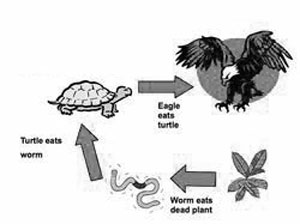
This vegetation plays a crucial role in controlling erosion, thus a decline in the sea turtles population would definitely lead to destruction and a decline in the number of beaches available.
The turtles also play their role as consumers in the food web. A good example is the alligator and snapping turtles for instance play the role of apex predators.
Specialized predators like the hawksbill sea turtles and leatherback (they exclusively feed on jellyfish) will help keep their prey in check.
Another example is the diamondback terrapin that feeds on periwinkle snails. If they don’t have predators, these snails can turn productive grasslands into salt marshes and eventually into barren mudflats in a short period of just 8 months!
Even when they die, turtles are also helpful to the ecosystem. Their long lifespan and high bone content mean their bodies feature high concentrations of minerals such as calcium.
Gopher tortoises are known to accumulate quite high calcium concentrations which they release slowly when they die.
Turtles as herbivores
Turtles are also consumers and this is another way they play a crucial role in the environment.
Most freshwater turtle species usually feed on aquatic plants such as algae. And in so doing, they help control the growth of these plants, which would otherwise grow quickly and disrupt the ecosystem.
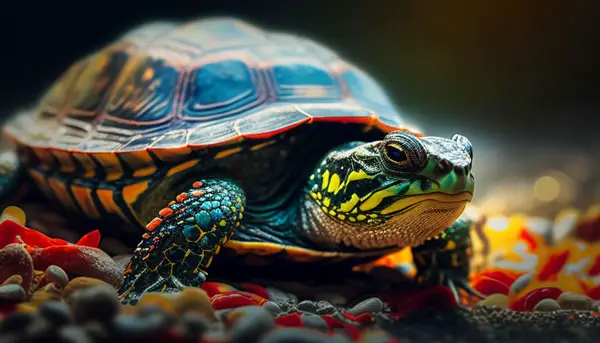
By keeping the goth of such plants under control, the turtles greatly contribute to a balanced ecosystem.
The Galapagos and Aldabra giant tortoises are the primary herbivores in their terrestrial environments.
Turtles as seed dispersers
Many turtle species are omnivores and herbivores which means they feed on a variety of fruits and plant materials in their environments.
They then carry this matter with them and deposit it elsewhere through defecating. The seeds passing through the animal’s gut increase their chances of germinating and growing into new plants— helping spread the seeds throughout our ecosystem.
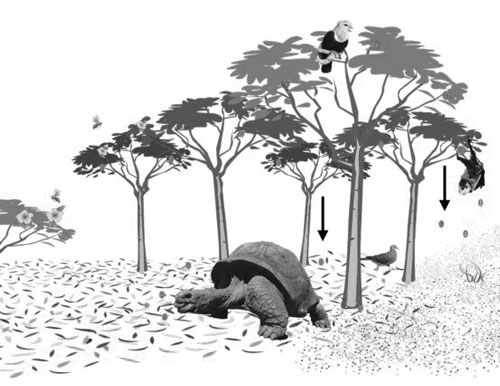
This is beneficial in promoting the growth of various plants and biodiversity.
Mind you, some of these turtle species are the sole distribution mechanism for some plants. One perfect example is the eateries box turtle which helps disperse the mayapple plant seeds. (Source).
Thus, if this box turtle species goes extinct, the plants would suffer a big blow in terms of being able to continue thriving and might as well become extinct over the years.
Turtles promote nutrient recycling
Turtles also play a critical role in the ecosystem by helping in nutrient recycling. They do so by eating dead plants and animal matter in the waters.
This way, they help regulate the amounts of nutrients in aquatic ecosystems such as lakes, rivers, ponds, and wetlands.
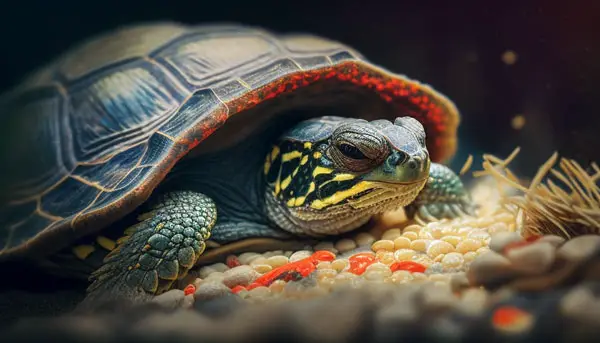
By eating these foods, they act as an effective cleaning crew that removes harmful bacteria sources in those environments.
And after eating this dead matter, they excrete them as waste which then acts as a source of nutrients for other organisms living in the ecosystem—promoting their growth and development.
Turtles build habitats for other animals
Another little-known role of turtles in the ecosystem is building habitats for other animals.
Case in point, the gopher tortoise usually constructs elaborate underground burrows. These are then used by many other animals—up to 360 in total!
These include the engendered indigo snakes, owls, frogs, etc.
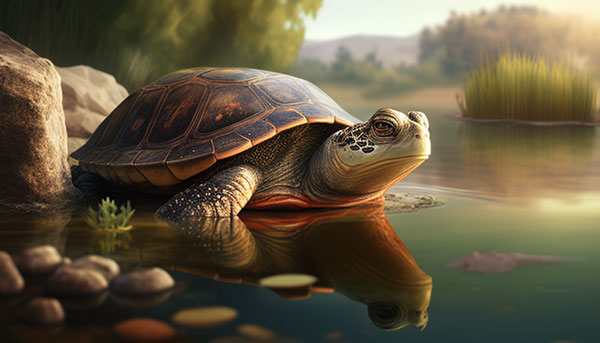
The animals are either in symbiotic relationships with the turtles, moving in after the tortoise leaves, while others simply displace the tortoises.
Keep in mind that their burrows have earned these turtle species the keystone species title, meaning if they become extinct, their entire ecosystem can easily collapse.
Another example is the hawksbill sea turtle whose unique foraging strategy of removing sponges when foraging helps promote healthy coral reef growth.
Mind you, coral reefs are one of the most diverse ecosystems on the planet as they provide shelter and habitat to thousands of marine life. (Source).
Turtles can also help restore ecosystems!
This has been evident in the Galapagos Islands, where the ecosystem collapsed as a result of the extinction of the giant tortoises. Invasive species as well as hunting decimated these tortoises by approx. 90%. As a result, other species were destroyed while others were pushed to the blink of extinction. (Source).
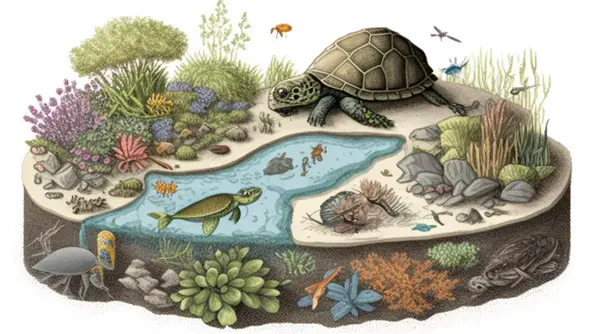
Thanks to the intervention by Galapagos National Park Directorate and conservation scientists, however, these native tortoise species are being reintroduced to some of the islands to help restore their native savannah-like ecosystems.
Final Verdict
Turtles are indeed critical for healthy and enriched biodiversity as well as healthy ecosystems in their habitats. They’re an essential link in food chains where they’re both consumers and prey. They promote nutrient recycling in aquatic ecosystems. They help control the growth of aquatic vegetation. They promote healthy coral reef growth. And they help with seed dispersal. Turtles also help create habitats for other animals, and some of the species such as the gopher tortoise have even been labeled as keystone species.
Unfortunately, turtles are the risk of diapering due to habitat destruction, climate change effects, road accidents, the pet trade, etc. Turtles being wiped out in any given ecosystem can leave a pretty huge gap that no other animal can fill in. This emphasizes the need for all of us to be turtle guardians and help save these shelled animals. So, what are you doing to keep these heroes safe and protected?
